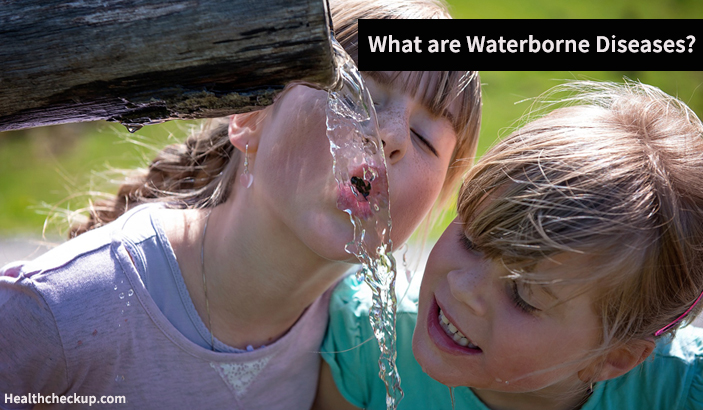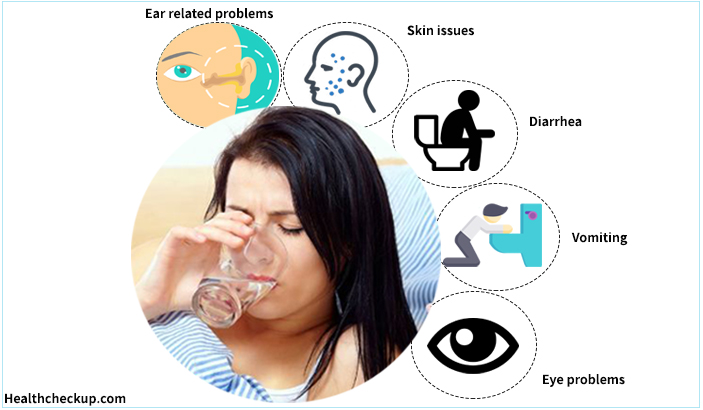Millions of people die each year due to Waterborne Disease. It is a global phenomenon and is mostly prominent in the underdeveloped regions of the world. What are waterborne diseases? and how does it affect the health of people? Contaminated or dirty drinking water is the primary reason behind the spread of waterborne diseases.
Analysis of Waterborne Disease
Dirty water consists of harmful microorganisms and pathogens that can strike several waterborne diseases, and serious illness proving to be life threatening. The lack of awareness and poverty often lead people to drink disease laden contaminated water and fall sick, and in the worst scenarios lose their lives. According to WHO and UNICEF, 80% of all illnesses are caused due to contaminated drinking water. Moreover, WHO also claims that waterborne illnesses are mainly due to poor sanitation. Poor hygiene and unsafe drinking water supply.
The list of waterborne diseases includes the several kinds of diarrheal associated issues like cholera, Guinea worm disease, dysentery and typhoid. You can also suffer from schistosomiasis and severe gastrointestinal problems. Whether you are aware or not, but there are around 3.4 million deaths every year due to the water associated diseases. The death toll is really high, and steps must be taken to avert drinking contaminated water.
The Reasons behind the Cause of Waterborne Diseases
- The outbreak of waterborne related diseases can be caused after an extreme event like severe snowfall or rainfall. The severe change in the climatic conditions can increase the risk of the diseases, especially in the developing and the under-developed nations.
- Drought is yet another extreme climatic change condition that increases the effect of pathogens in the water treatment plants and contaminates the surface water.
- The changes in the coastal ecosystems and oceans are the cause behind the spread of waterborne diseases. The changes in the pH level, salinity, nutrient and water security can degrade the fresh water. The area where the population uses untreated surface water are at the maximum risk.
- The dispersion of chemical contaminants in the ocean water can also cause the outbreak of water related disease due to the release of harmful toxins and chemicals in the water bodies that gets locked in the ice and spread across the coastal areas.
Some Primary Infections Causing the Diseases
Perhaps the primary cause of the disease is due to infectious agents. Some of the infections include:
- E.coli
- Giardiases
- Cryptosporidiosis
- Shigellosis
- Naegleria
- Amebic meningoencephalitis
- Norovirus
- Algal blooms
- Legionellosis
Other Causes of Waterborne Diseases
Other causes behind the spread or the outbreak of the food and waterborne diseases include:
- Coming in contact with infected animals
- Coming in contact with an infected person
- Very poor sanitation
- Unhygienic living situations
- Wrong water treatment
- Travelling internal
How can you bring a Difference in the Severity of the Waterborne Diseases?
There are several mitigation steps that can be initiated in order to bring a transformation and lessen the severity of the water associated diseases taking a toll on human health and life worldwide. They are as follows:
- Recycling and reusing water
- Capturing the long term storage of carbon dioxide, or what is referred to as “Carbon Sequestration”.
- Wetlands protection so that there is a decrease in the degradation of the quality of water, especially during storms.
- Encouraging above-ground irrigation so that waterborne diseases are less exposed to humans.
- Decrease the use of air conditioning so that water ecology is not impacted negatively, leading to parasitic waterborne illness.
- Encourage green space so that the severe precipitation events can be avoided in majority of the times.
Common Symptoms of the Waterborne Illnesses
There are a variety of symptoms displayed when you are affected with any waterborne disease. Some of the common ones include:
- Vomiting
- Nausea
- Loss of appetite
- Eye problems
- Skin issues
- Ear related problems
- Dysentery
- Severe abdominal pain and cramps
- Diarrhea
Usually, microbial waterborne pathogen illnesses get transmitted via the contaminated water or any material that enters into your mouth. Dirty hands, clothes, mugs, cooking utensils, uncovered food and drinking water must be avoided to protect yourself from getting infected.
Diarrhea: One of the most Common Waterborne Diseases
4% of the all deaths occur due to diarrhea across the globe. There is a 5% of the population suffering from it who goes into disability. 2.2 million people die every year globally due to diarrhea. It is caused by the gastrointestinal infection affecting mostly children in the areas with unsafe water. Dysentery and cholera can also be the reason behind severe and fatal diarrhea form. A host of parasitic, viral and bacterial organisms are responsible to contaminate the water and cause diarrhea. Water contaminated with human and animal faeces are also the cause behind diarrhea.
The complete picture of the waterborne disease is quite complicated in nature. It is because the human health issues in association with the water related diseases have become extensive with the outgrowth of new infectious agents and the re-emergence of the already known ones. There is data available for some water related diseases, but analysis and examination with the modern diseases are yet to be done. From the above discussion, it is for sure that you have got a fairly good idea about what are waterborne diseases, symptoms, causes and the health issues that take place.
Medically Reviewed By









